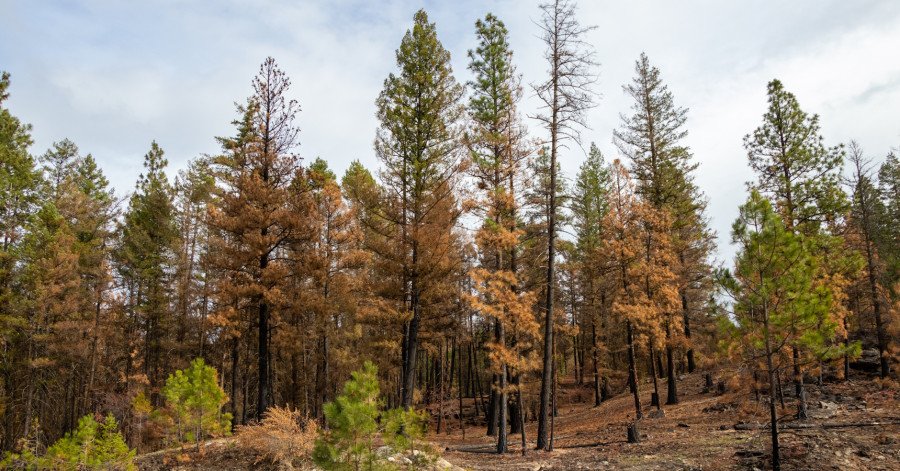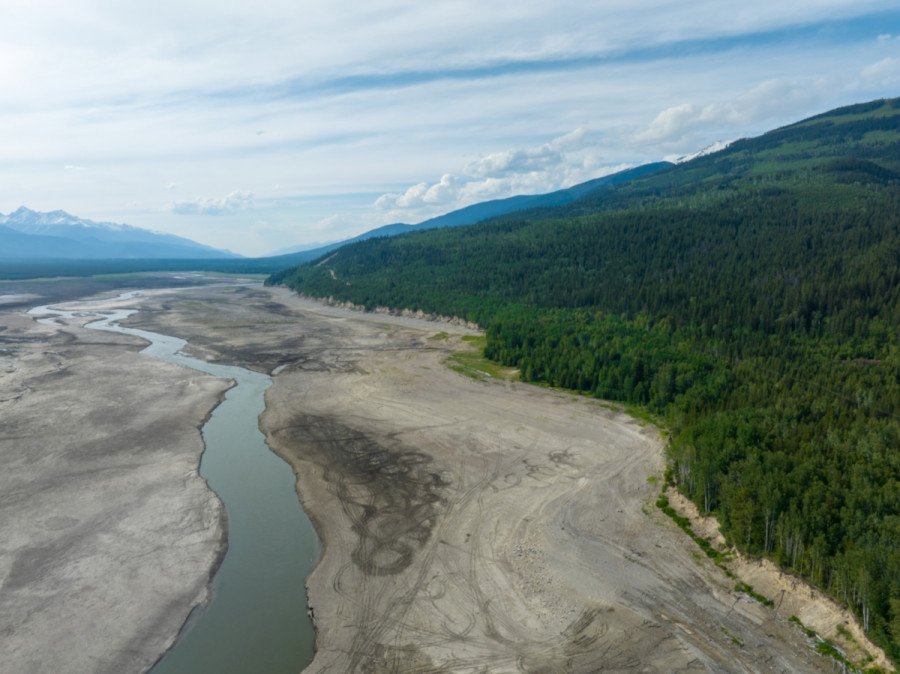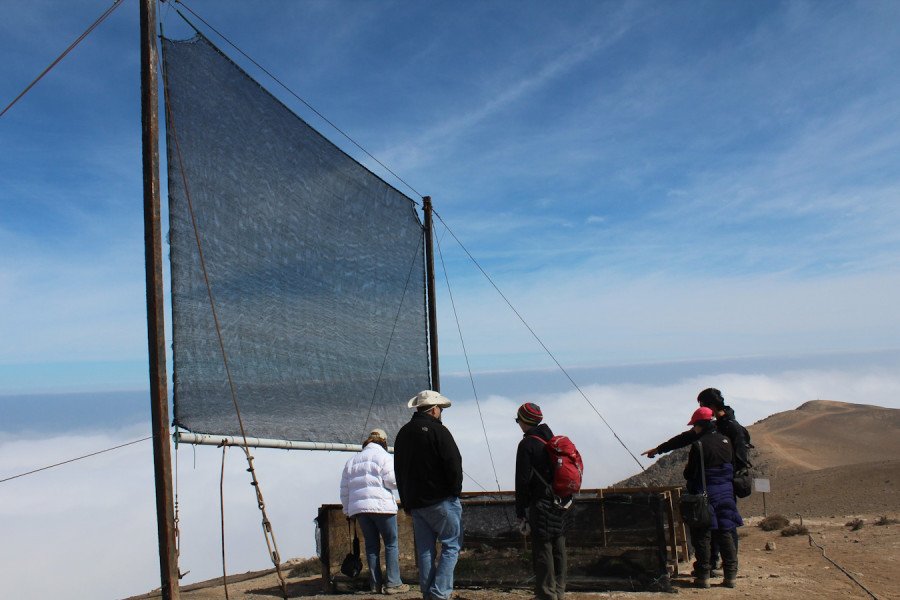Hydroelectricity and drought
Explore drought, its impact in B.C. and the connection between electricity generation and drought conditions.
- Grade 9
- 3 activities
- 2.3 hours

Big idea
The biosphere, geosphere, hydrosphere, and atmosphere are interconnected, as matter cycles and energy flows through them.
Learning objectives
- Demonstrate an understanding of drought in B.C. and its impact on all living things, communities and businesses.
- Demonstrate knowledge of the connection between drought, increasing winter storm events and electricity.
- Demonstrate an understanding of specific business activities around water and energy use and list relevant tips for conservation.
Activities
BC curriculum fit
Science 9
Big ideas
- The biosphere, geosphere, hydrosphere, and atmosphere are interconnected, as matter cycles and energy flows through them.
Content
- Matter cycles within biotic and abiotic components of ecosystems
- Sustainability of systems
- First People’s knowledge of interconnectedness and sustainability
Curricular Competencies
Questioning and predicting:
- Demonstrate a sustained intellectual curiosity about a scientific topic or problem of personal interest
Processing and analyzing data and information:
- Apply First Peoples perspectives and knowledge, other ways of knowing, and local knowledge as sources of information. Analyze cause-and-effect relationships.
Assessments
Each activity includes suggestions for which skills and points of engagement to observe during the acitivties.
Background info
Drought in B.C.
Excerpt from the B.C. Drought Information Portal
“Drought is a long period with below normal rain or snow that may result in a water shortage. Drought, combined with the year-over-year impacts of extreme weather, can affect the water we need for people, fish, animals and the environment.
The Drought Information Portal is a single source to access drought levels across geographic regions in British Columbia. The maps provide information on current and historical provincial drought levels, watershed conditions, and other information related to drought monitoring.”
Impacts of drought
Excerpt from the ClimateReadyBC site: Drought and water scarcity in B.C.:
“British Columbia will experience more drought and water scarcity as the climate continues to warm.
B.C.’s climate is changing. Hotter temperatures, insufficient snow accumulation, faster spring snowmelt, glacier loss, and reduced precipitation over extended periods of time can cause drought and water scarcity. As the climate continues to warm, drought and resulting water scarcity will become more common.
Drought and water scarcity can impact communities in many ways, as they can lead to:
- Reduced water availability for households and businesses
- Warmer river temperatures, affecting fish and aquatic life
- Impacts on groundwater levels
- Reduced crop quality and smaller harvests
- An increase in agricultural pests
Drought situations also increase the risk of wildfire, creating conditions for fires to spread more easily, faster, and burn for longer. It can affect crop production, leading to smaller harvests or lost crops. It can also leave less water available for household and business use, with varying impacts to social, economic and cultural activities.”
The impacts of climate change will continue to influence water levels in B.C. This has had, and will continue to have, impacts on people, ecosystems, food supplies, and industrial activity. As a place that has historically had abundant water, water scarcity can be a difficult concept for B.C. residents to comprehend and act on.
Drought and First nations communities
First Nations communities around the province play important roles in protecting and stewarding the land and water for future generations.
Excerpt from the Indigenous Watersheds Initiative:
“Watersheds hold profound significance for First Nations communities as they are integral to their cultural, spiritual, and physical well-being. These vital ecosystems, encompassing rivers, lakes, wetlands, and surrounding lands, play a pivotal role in sustaining traditional ways of life for many Indigenous peoples. Watersheds serve as sources of nourishment, providing fish, plants, and other resources crucial to traditional diets. Additionally, these environments often hold sacred value, connecting First Nations to their ancestors and spiritual practices. As caretakers of land and water, First Nations recognize the delicate balance within watersheds and the necessity of preserving them for future generations. The well-being of these ecosystems directly influences the overall health and resilience of the community, making the conservation and sustainable management of watersheds not merely an environmental and economic concern but also a fundamental aspect of cultural preservation for First Nations.”
BC Hydro and storm season
Check out the news release from September 2024: BC Hydro is preparing for impacts of drought this storm season
Due to multi-year drought in B.C. there is an elevated risk of power outages in the event of a windstorm. This is particularly a concern in areas that have had longer dry conditions or major wildfires.
Prolonged drought puts vegetation under stress, damaging roots, trees and soil. Trees weakened by years of drought can be more susceptible to wind and stormy conditions, and could be at risk of falling over, contributing to power outages.
Less than 40% of people in B.C. have an emergency kit at home. People in the Lower Mainland are most likely to say they are concerned about the impacts of storms but are the least prepared.
BC Hydro is encouraging B.C. residents to prepare for storms by:
- Having a well-stocked emergency kit with water, flashlight, batteries, and non-perishable goods to last at least 72 hours, as well as a plan in place for your family in the event of an extended outage.
- Remembering the 10-metre rule – a downed line is an emergency, stay 10 metres back (about the length of a bus) and dial 9-1-1.
- Understanding there is often no way to tell if a power line is live. It will not likely be smoking, buzzing, or flashing.
BC Hydro and Water Use Plans
Excerpt from BC Hydro’s Water Use Plans:
“Water use plans were developed for most of BC Hydro's hydroelectric facilities through a consultative planning process involving participants, such as government agencies, First Nations, local citizens and other interest groups.
The overall objective was to make recommendations to the B.C. Comptroller of Water Rights for incremental adjustments to our operations to benefit (or balance) power generation, fish, wildlife, cultural heritage, social (e.g., recreation), and other values.”
Take action
Check out the BC Government Drought preparation and response site
- Review essential water use
- Reduce non-essential water use
- Maximize water system efficiency
- Recycle water used in industrial operations
- Use water efficient methods and equipment
- Check all plumbing for leaks
- Maintain landscaping with grey water
- Install a water recirculating system
- Conduct a water audit
- Monitor water usage
- Implement water saving policies
- Install low flow devices
- Upgrade to water conserving fixtures for industrial use
- Replace high-volume hoses with high-pressure, low-volume cleaning systems
- Encourage employees to adopt water-saving behaviours
BC Hydro and energy savings for business
Check out BC Hydro’s Energy-efficient technologies & tips
Get help with the basics of everything from heating and cooling systems to the latest in lighting. There’s tips that businesses can use to ensure they're choosing the right technologies and using them effectively.
Saving water for business
Check out these 10 simple ways for businesses to save water
- Conduct a water audit
- Fix leeks and dripping taps
- Install water-efficient fixtures
- Optimize landscaping practices
- Educate employees
- Utilize recycled water
- Monitor water usage
- Implement water-saving policies
- Collaborate with partners and suppliers
- Embrace water-saving technologies




